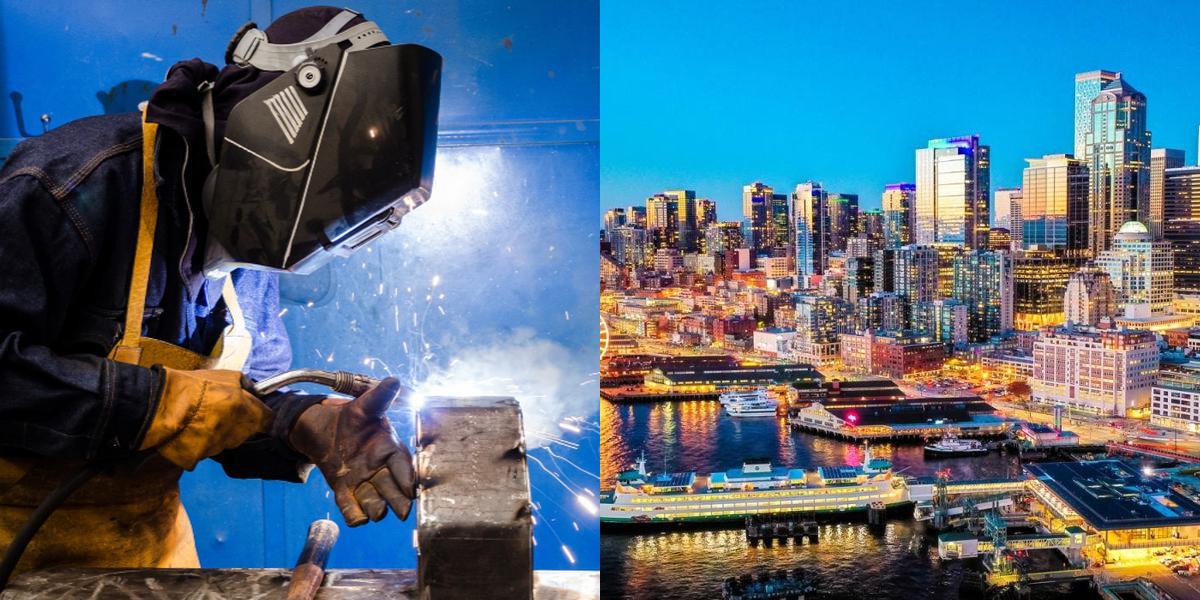How to Become a Welder in Washington

What is a Welder?
A welder is a skilled tradesperson who uses various welding techniques to join metal parts together. They work in a variety of industries, such as construction, manufacturing, and automotive, and play a crucial role in the fabrication and repair of metal structures and equipment.
Some of the responsibilities of a welder include:
- Reading and interpreting blueprints and technical drawings
- Selecting and preparing the appropriate welding equipment and materials
- Operating welding machines and tools to join metal parts
- Inspecting welds for accuracy and quality
- Following safety protocols to prevent accidents and injuries
How do I get a job as a Welder?
Once you have obtained your welder certification, you can start looking for job opportunities in the field. Here are some steps you can take to increase your chances of getting a job as a welder:
-
Build a Strong Resume: A well-crafted resume is essential when applying for a job as a welder. Highlight your welding education, certification, and any relevant work experience. Be sure to include any specialized skills or certifications you have, such as experience with specific welding techniques or equipment.
-
Network: Networking can be a valuable tool when looking for a job as a welder. Attend industry events, trade shows, and job fairs to meet professionals in the field. Join professional organizations, such as the AWS, and participate in online forums and social media groups for welders. Networking can help you learn about job opportunities and make connections that may lead to employment.
-
Apply for Jobs: Once you have a strong resume and have built a network of contacts, start applying for welding jobs. Look for job postings on job boards, company websites, and in local newspapers. Consider reaching out to welding companies directly to inquire about job openings. Tailor your resume and cover letter to each job application to highlight your relevant skills and experience.
-
Prepare for Interviews: If you are invited for an interview, take the time to prepare. Research the company and the specific job you are applying for. Practice common interview questions and be prepared to discuss your welding skills and experience. Bring copies of your resume and any certifications to the interview.
-
Continuing Education and Professional Development: Once you have secured a job as a welder, it is important to continue learning and developing your skills. Consider taking additional welding courses or pursuing advanced certifications to expand your knowledge and increase your job prospects. Stay up to date with industry trends and new technologies by attending workshops and conferences.
Career Paths and Opportunities after Becoming a Welder
Becoming a welder opens up a wide range of career paths and opportunities. Here are some potential career paths you can pursue after becoming a welder:
-
Construction and Manufacturing: Welders are in high demand in the construction and manufacturing industries. You could work on projects such as building bridges, skyscrapers, or manufacturing equipment and machinery. As a welder in these industries, you may have the opportunity to specialize in a specific type of welding, such as structural welding or pipe welding.
-
Automotive and Aerospace: Welders are also needed in the automotive and aerospace industries. In these industries, welders may be responsible for welding components for cars, airplanes, or spacecraft. This may involve working with specialized materials, such as aluminum or titanium.
-
Shipbuilding and Offshore Industries: Another career path for welders is in shipbuilding and offshore industries. Welders in these industries may work on building and repairing ships, oil rigs, or offshore wind farms. This type of work may involve welding underwater or in challenging conditions.
-
Maintenance and Repair: Many industries require welders for maintenance and repair work. As a welder in this field, you may be responsible for repairing equipment, machinery, or structures. This could involve working in a variety of settings, such as factories, power plants, or oil refineries.
-
Entrepreneurship: After gaining experience as a welder, you may choose to start your own welding business. This could involve offering welding services to individuals or businesses, or specializing in a specific type of welding or industry. Running your own business allows you to have more control over your work and potentially earn a higher income.
How much does a Welder make?
The average salary for a welder can vary depending on factors such as experience, location, and industry. According to the U.S. Bureau of Labor Statistics (BLS), the median annual wage for welders, cutters, solderers, and brazers was $43,410 as of May 2020. The lowest 10 percent earned less than $30,860, while the highest 10 percent earned more than $64,240.
Starting salaries for welders can vary greatly. Entry-level welders with little to no experience may start at or near the lower end of the salary range. However, as they gain experience and develop their skills, their earning potential increases.
Final Thoughts
Becoming a welder can be a rewarding career choice with many opportunities for growth and advancement. By obtaining your welder certification, gaining practical experience, and actively pursuing job opportunities, you can increase your chances of finding a job as a welder. Once you have established yourself in the field, there are numerous career paths you can explore, from working in construction and manufacturing to specializing in automotive or aerospace welding. With the right skills and experience, you can build a successful and fulfilling career as a welder.
If you're thinking of a new career path, Dreambound offers in-depth guides to understand various job choices:

Justine Tacmo is part of the Growth team at Dreambound. He assists the organization by updating critical information so students receive the most up-to-date information for their desired trade schools. Besides, he has a passion for writing and expresses it through poetry, covering themes of life, love, and mental health, which is also his advocacy.



